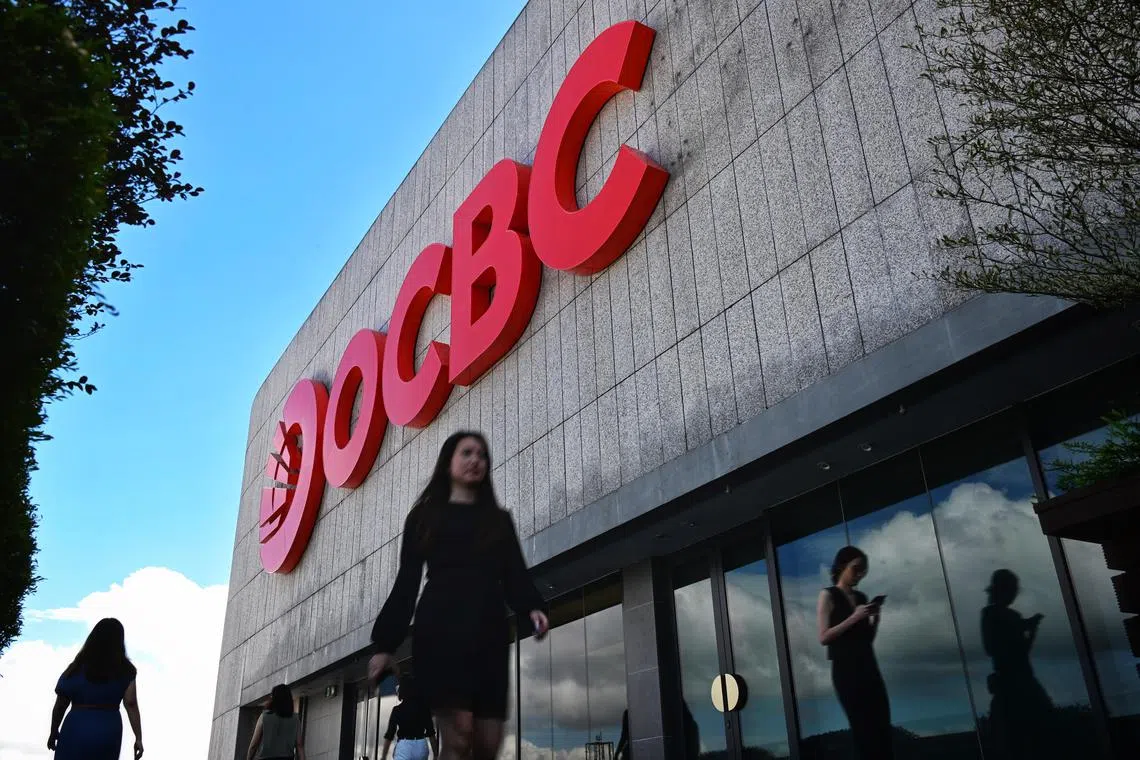OCBC going bigger on tech as it looks to support Chinese firms doing business with Asean
Sign up now: Get ST's newsletters delivered to your inbox

OCBC said in May that it will hire 300 highly-skilled engineers in China over the next three years
PHOTO: ST FILE
Follow topic:
SHENZHEN – OCBC Bank’s plan to expand its software engineering team will give a leg up to the lender’s corporate banking business, said its executives in the high-tech hub of Shenzhen.
Singapore’s second-largest bank said in May that it will hire 300 highly skilled engineers
Most of the staff will be based in the Shenzhen office, where the bank currently has more than 260 engineers, up from 20 to 30 in 2018.
Having enhanced tech capabilities will allow the bank to better serve customers like Greater China companies that are rapidly growing in South-east Asia.
The bank aims to standardise more of its digital systems, which will make it easier for customers to view their finances and manage their money across various markets, by logging into just one platform, for example.
The increased focus on tech will not only benefit OCBC’s business in China but also support the operations of the entire group, such as by improving internal processes for staff, said Mr Liu Dawei, OCBC China’s regional head of southern China and general manager of the Shenzhen branch.
OCBC has 4,500 staff across nearly 70 branches in 17 cities in Greater China – mainland China, Hong Kong, Macau and Taiwan.
This is complemented by the lender’s partnership with Bank of Ningbo.
Asked how the bank is catering to cities’ strengths in specific industries, Mr Liu cited Shenzhen, an important innovation hub that is home to the headquarters of heavyweights such as electric vehicle maker BYD and tech giant Huawei.
Shenzhen is where many technology, media and telecommunications (TMT) clients are based, so it is essential for the bank to build a strong portfolio of such customers in the city, with attractive services and products for them, said Mr Liu.
The next step is to bring the product capabilities the bank has built to other parts of its China business, such as Beijing, another major tech hub, he added.
When it comes to helping Chinese companies enter Asean, OCBC has a regional team of 50 relationship managers catering to these firms in Singapore, Malaysia, Indonesia, Vietnam and Thailand. Malaysia and Indonesia are core markets for the bank, along with Singapore and Greater China.
These bankers are able to promptly identify opportunities for clients in these markets, complementing the bank’s China business, said Mr Liu.
For example, a growing number of Chinese companies are setting up manufacturing facilities in Malaysia, with Penang as a key hub. Lithium battery maker EVE Energy said in 2022 that it will invest US$422 million (S$570.7 million) to build a cylindrical battery production base in Penang’s neighbouring state Kedah.
Mr Joseph Liu, OCBC’s Greater China head of TMT, said: “We’re seeing a lot of semiconductor companies moving to Malaysia, especially in back-end manufacturing... We’re also seeing some of the production of smartphones (moving) into Malaysia as well.”
Meanwhile, in Indonesia, companies are ramping up their investments in the renewable energy sector and looking to the country’s vast reserves of nickel, a critical raw material in the production of electric vehicle batteries.
Mr Liu Dawei said: “We are growing quite fast in this area – not only in traditional trade finance, but also in project finance.”
Mr Joseph Liu said the regional team of relationship managers can help Chinese companies bridge cultural gaps and navigate unfamiliar regulatory and financial environments.
They can also provide the firms with tailor-made solutions, in areas such as foreign exchange hedging and identifying acquisition targets, especially for tech companies which want to enter new markets quickly, he added.
“We’re trying to support them in these areas, for them to make that connectivity between China and Asean.”


